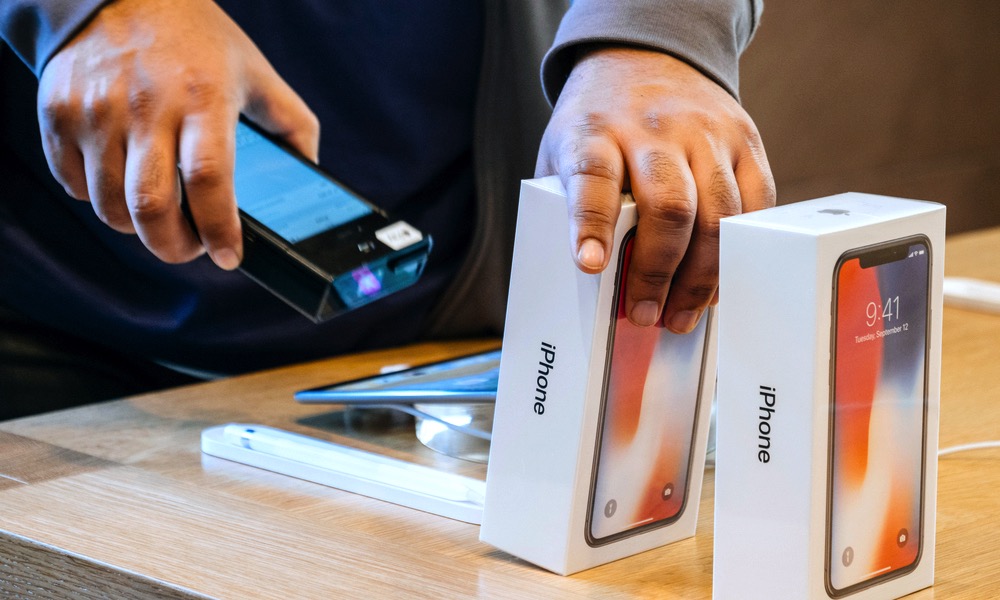Could Apple Have Shipped Several Months Worth of iPhones into the US?
 Credit: 19 STUDIO / Shutterstock
Credit: 19 STUDIO / Shutterstock
Toggle Dark Mode
Earlier this week, news surfaced that Apple had been flying planeloads of iPhones into the United States in advance of the sweeping tariffs that President Donald Trump recently enacted. Following that, some folks did the math to try and figure out exactly how much inventory this would amount to — and it’s not nearly as much as you might think.
The only specific report we heard was from The Times of India, which was told that “Apple transported five planes full of iPhones and other products from India to the US in just three days during the final week of March.” President Trump announced sweeping new global tariffs on April 2, including a 54% levy on China that was upped to 104% by the time the tariffs came into effect today.
Sources told The Times of India that Apple now has enough products inside US warehouses to “meet several months of customer demand,” but simple logistics and how Apple’s supply chain typically rolls cast some doubt on whether that’s even possible.
Developer Ryan Jones, best known for the flight tracking app Flighty, decided to crunch some numbers to determine exactly how many iPhones five planeloads would be, and the results are surprising, especially when considered against Apple’s sales volume.
Jones estimates that Apple can only ship 350,000 iPhones on a Boeing 747 freighter. That’s based on the maximum loaded weight of the airlines, which, as John Gruber points out at Daring Fireball, is the only valid calculation. The volume of iPhones doesn’t matter as the plane has a maximum weight limit that can’t be exceeded.
In that light, the math isn’t super complex, but while 350,000 iPhones sounds like a lot, Apple likely sells about 150,000 of them in the United States every day. That would make one planeload equal to a mere two days of inventory.
350,000 iPhones packed onto a single plane is a lot of iPhones. Sending a few million units across a dozen (or more!) planes is, quite literally, tons of iPhones. But Apple sells about 50 tons of new iPhones in the US alone every day. We all know that Apple’s iPhone business is huge. But when you start to consider it in practical terms like this it’s just staggering.
John Gruber
There’s also the fact that the planes weren’t carrying only iPhones. Apple makes other products, all of which will be subject to tariffs if they’re not already in US borders. These flights undoubtedly contained everything from AirPods to iMacs, the latter of which would have reduced the number of iPhones that could be transported on each plane.
To be realistic, Jones’ calculations are based on working back from Apple’s revenue and analyst estimates to determine how many iPhones are sold in the US. He takes annual worldwide sales and then assumes US sales based on the percentage of revenue accounted for in the US. Still, if anything, these numbers are likely on the conservative side. The estimated US sales volume of 55 million iPhones annually isn’t likely too far off, and if anything, it may be higher than that.
However, it also fails to account for seasonal shifts. Apple is almost certainly selling more than 150,000 iPhones per day from September to December, which is not only when the new models arrive but also the quarter leading up to the holidays. If anything, we’re in Apple’s slow season right now — or at least we should be. The threat of tariffs has caused a rush on Apple Stores with foot traffic that rivals the holiday seasons. That’s likely to burn through sales faster than Apple anticipated.
Nevertheless, it’s also a safe bet that Apple has flown in more than five planeloads of iPhones. After all, if Apple was already shipping in iPhones and other products in late March, it probably started even earlier and likely continued doing so until the eleventh hour last night. Everyone knew Trump would announce new tariffs on April 2, but nobody knew what they’d be until the announcement came. From Apple’s perspective, the last week in March was no different from the first week in March. For all we know, fleets of iPhone-laden cargo aircraft have been crossing the Atlantic and Pacific oceans for weeks.
The other challenge is that Apple has long been known for its “just-in-time” supply chain — something that was developed and refined by Tim Cook when he was the company’s Chief Operating Officer under Steve Jobs. Very little has changed there, and Apple’s strength has always been that it doesn’t sit on massive amounts of inventory. As Gruber reminds us, Cook once described in an interview with Fortune as “fundamentally evil” and bad for the company’s balance sheet.
As a result, it’s unlikely Apple has a substantial amount of warehouse space in the US, considering Cook’s strategy from the start was to close warehouses and factories and build relationships with contract manufacturers to produce iPhones nearly on demand. Cook has been repeatedly lauded for his logistical genius in setting up this supply chain. It works very well in an ideal world, but not so much when the US starts The Dumbest Trade War in History.








